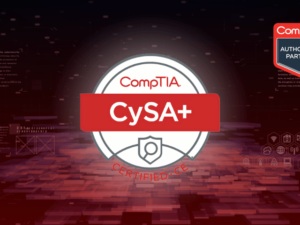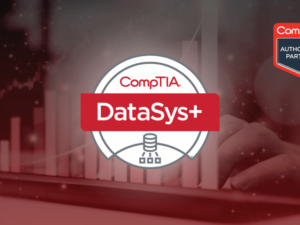SELENIUM TEST AUTOMATION (BASIC TO ADVANCED)
The Selenium Test Automation provides a comprehensive training course from basic to advanced levels of functional and regression testing using ...
Selenium. Participants will gain practical experience with Selenium IDE, WebDriver, and Grid, learning to create effective cross-browser test scripts. The course covers essential topics such as element identification, synchronization, handling dynamic objects, and advanced features like JavaScript alerts and data-driven testing. By the end of the program, attendees will be proficient in using Selenium for automated testing, integrating it with tools like Maven and Jenkins, and implementing best practices in test automation.
Show more Instructor
Acumen IT Training 0
0 reviews
- Description
- Reviews

SELENIUM TEST AUTOMATION (BASIC TO ADVANCED)
COURSE DESCRIPTION
This course details Functional and Regression Automation Testing using Selenium. It emphasizes on practical implementation of all Selenium concepts.
PROGRAM GOAL
- At the end of this program, participants gain an understanding of how to work with selenium IDE for creatibg Test Scripts
- How to create cross browser based effective test scripts using Web Driver
PREREQUISITES
- Good understanding of testing concepts
- Knowledge of Core Java
- Knowledge of HTML
- Knowledge of XML
TRAINING INCLUSIONS
- Training materials/ reference
- Hands on exercises
- Credly badge & badge certificate
- Certificate of training completion
- 30 Days Post-training Support via LMS
INTENDED AUDIENCE
- New users of Selenium who need to automate manual testing and verification in a short Amount of time.
- Users who will assume technical lead roles or team lead roles in use of automated test tools.
- Existing users of Selenium who need to customize and enhance their automated tests through scripting.
COURSE OUTLINE
- Introducing Selenium
- What is Selenium?
- Selenium Components overview
- Selenium IDE
- Selenium RC
- Selenium Grid
- Selenium Web driver
- Web Driver Architecture
- Element Locator
- Object Identification process
- Identifying WebElements using id, name, linkname, class, xpath, tagname,CSS
- Regular Expressions
- TestNG Framework
- Introduction
- Annotations
- Test methods, Test classes and Test groups
- Dependencies
- Running TestNG
- Creating Test Scripts in WebDriver
- Selenium-WebDriver API Commands and Operations
- Cross browser execution
- Drivers for Firefox, IE, Chrome
- Actions on various Form Controls
- Synchronization
- Why synchronization?
- Thread.sleep
- Implicit Wait
- Explicit Wait
- Handling Ajax applications
- Verification
- Verifying the properties of the web element
- Verifying the titles, textboxes, Clickable buttons, links
- Assertions
- Handling Dynamic Objects
- Finding Multiple Objects
- Traversing through Web Tables
- Traversing through Web List
- Handling Dynamic Objects
- Constructing xpaths at RunTime
- Handling Events on a webpage
- Keyboard events
- Mouse Events
- Advanced Selenium
- Handling JavaScript Alerts
- Handling Browser multiple windows/tabs
- Handling webpage Iframes
- Handling Native Pop-up windows
- Working with AutoIT
- Data Driven Test
- Reading and Writing to Excel file
- Reading and writing to text/csv file
- TestNG DataProvider
- Page Object Model (POM)
- What is Page Object Model
- When to use Page Object Model
- Page Object Model With Page Factory
- Implementation
- Selenium-Grid
- Why Selenium-Grid?
- Grid Architecture
- Hub Configuration Node
- Configuration Configuring
- Capabilities
- Grid execution
- Advanced TestNG Framework
- TestNG Test Suite
- testng.xml
- Parameters from testng.xml
- Parameters with DataProviders
- Parallel tests, classes and methods
- Test results
- Success, failure and assert
- Logging and results
- Reports
- Reporter Log
- Adding Snapshots in report
- Using ReportNG
- Selenium with Maven
- What is Maven and Why Maven?
- Understanding Maven central repository
- POM.xml
- Importing the maven project into eclipse
- Building a Maven project and running it through Maven
- Implementation
- Integration with Jenkins
- What is Jenkins
- Integrating Maven Project with Jenkins
- Configuring Jekins project
- Creating Builds
- Execution
- Implementation
Please contact us for the full course outline, schedule and private bookings.
Please, login to leave a review
Share
Course details
Duration 5 Days
Popular courses
Request a Quote
Popular Courses
Archive
Working hours
| Monday | 9:00 am - 6.00 pm |
| Tuesday | 9:00 am - 6.00 pm |
| Wednesday | 9:00 am - 6.00 pm |
| Thursday | 9:00 am - 6.00 pm |
| Friday | 9:00 am - 6.00 pm |
| Saturday | Closed |
| Sunday | Closed |








